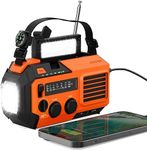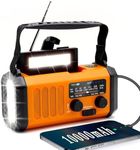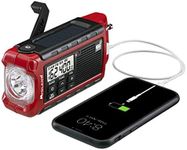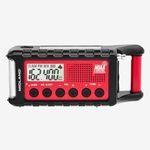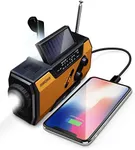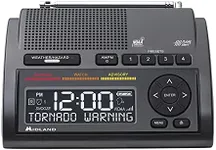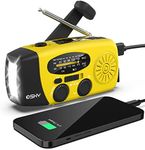Buying Guide for the Best Emergency Radios
Choosing the right emergency radio is important for staying informed and safe during power outages, severe weather, or other emergencies. The best emergency radio for you will depend on your specific needs, such as where you live, how you plan to use it, and what features are most important for your situation. Understanding the key specifications will help you make a smart choice that keeps you connected when it matters most.Power SourceThe power source refers to how the radio gets its energy to operate. This is crucial because, during emergencies, electricity may not be available. Emergency radios can be powered by batteries, hand cranks, solar panels, or even USB charging. Radios with multiple power options offer the most flexibility. If you live in an area with frequent power outages or severe weather, a radio with hand crank and solar options is ideal, as it ensures you can recharge it even without electricity. If you only need it for occasional use, battery or USB-powered radios may be sufficient.
Radio BandsRadio bands determine what types of broadcasts the radio can receive. The most common are AM, FM, and NOAA weather bands. AM and FM are standard for news and entertainment, while NOAA weather bands provide real-time weather alerts and emergency information. If you want to stay updated on local news and weather emergencies, make sure your radio includes NOAA weather bands. For general use, AM/FM may be enough, but for comprehensive emergency preparedness, having all three is best.
Alert FunctionThe alert function allows the radio to automatically turn on and broadcast emergency alerts, such as severe weather warnings. This feature is important if you want to be notified of emergencies even when you’re not actively listening to the radio. Some radios have a loud alarm or flashing light to get your attention. If you live in an area prone to sudden weather changes or natural disasters, an alert function can be a lifesaver. If you prefer to check updates manually, this feature may be less critical.
Portability and SizePortability and size refer to how easy it is to carry and store the radio. Smaller, lightweight radios are easier to pack in an emergency kit or take on the go, while larger radios may offer better sound quality or more features. If you need a radio for hiking, camping, or to keep in a small emergency kit, choose a compact model. If you plan to use it mainly at home, a larger radio with a handle might be more comfortable.
Durability and Water ResistanceDurability and water resistance describe how well the radio can withstand rough conditions and exposure to water. This is important if you expect to use the radio outdoors or in wet environments. Radios with rugged, shock-resistant cases and water resistance ratings are better suited for outdoor use or emergencies involving storms and floods. If you’ll mostly use the radio indoors, these features may be less important, but they add peace of mind for unpredictable situations.
Additional FeaturesAdditional features can include built-in flashlights, USB charging ports for devices, SOS alarms, and more. These extras can make the radio more useful in emergencies by providing light, charging your phone, or signaling for help. Consider which features are most important for your needs. For example, if you want a multi-purpose tool for your emergency kit, look for a radio with a flashlight and phone charger. If you just need basic radio functions, you can skip the extras.
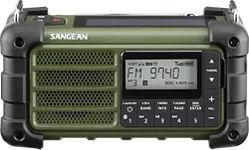
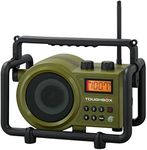
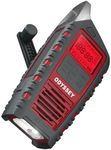

![[Upgraded Version] Emergency Hand C](https://images-proxy.bestreviews.guide/tHl2RUboSvFwynfW1heIbYf8kJU=/0x150/https://m.media-amazon.com/images/I/41z9C7JbIvL._AC_CX679_.jpg)

